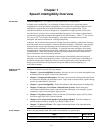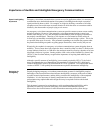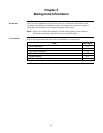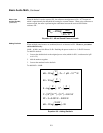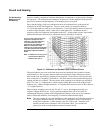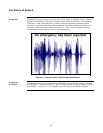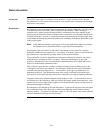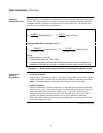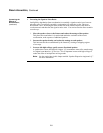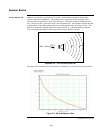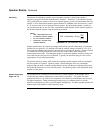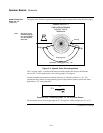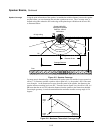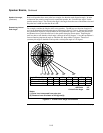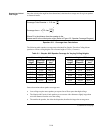
2-7
Several equations are available for estimating the amount of reverberation that can be expected in
a room. The equations take into account the room dimensions and surface materials to provide a
reasonably accurate estimation of a rectangular room’s reverberation time. The formulas below
are commonly used Sabine and Eyring equations:
The Sabine Equation, used when α < 0.2:
α
=
S
V049.0
T
English Units (ft)
α
=
S
V16.0
T
Metric Units (m)
The Eyring Equation, used when α > 0.2:
)]1([ln)S(
V049.0
T
α−−
= English Units (ft)
)]1([ln)S(
V16.0
T
α−−
= Metric Units (m)
Where:
V = Room Volume (L x W X H)
S = Total Surface Area (2LH +2LW + 2WH)
α = Average absorption coefficient, equal to the area of each surface multiplied by the
absorption coefficient for that surface, divided by the total surface area of the room
Equation 2-7. Sabine and Eyring Formulas for Calculating Reverberation Times
• Acoustical treatment:
Adding drapes, wall hangings, carpeting, or specially designed diffusers can absorb sound and
reduce reverberation. If possible, this is perhaps the best method in combating reverberation.
Note: Final room acoustics are often unknown at the time of the system design.
• Speaker Placement:
Because reverberation is caused by reflections, it is important to select speaker locations that
minimize stray energy. Sound system designers are often heard saying “put the sound where
people are and do not put sound where people are not.” This usually implies locating
speakers toward the center of the room, away from walls and other hard surfaces. When
possible, aim speakers towards soft surfaces such as rugs or upholstered furnishings.
These soft surfaces absorb direct sound coming from the speaker, preventing the sound from
scattering throughout the room.
Continued on next page
Room Acoustics, Continued
Estimating
Reverberation Times
Countering the
Effects of
Reverberation



